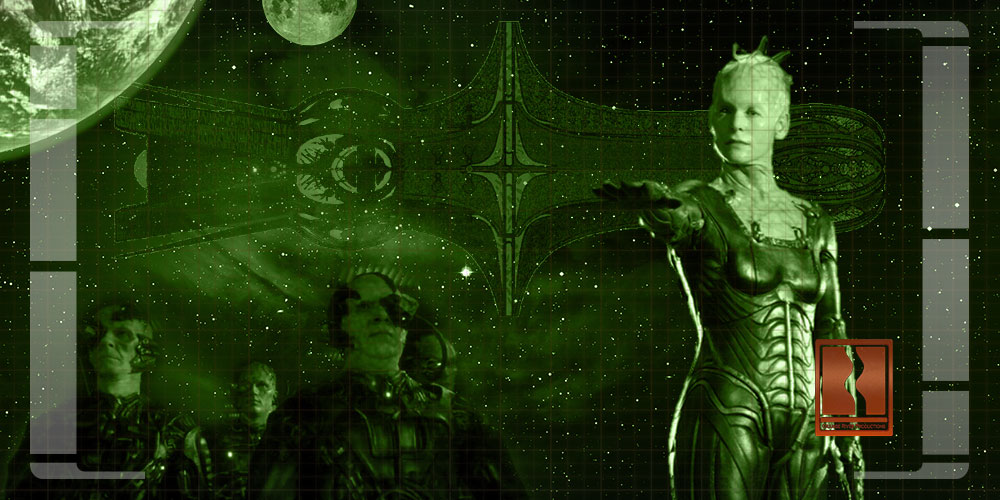Hey guys, Tyler here. Star Trek: The Motion Picture has been critically divisive since it was first released in 1979. Many praise its visual effects, sense of grandeur and a musical score while lamenting its thin storyline and slow pacing. But one central element of the film’s story has stood the test of time, and has gone down as one of the most intriguing twists in sci-fi cinema: V’ger. V’ger is a machine intelligence surrounded by a massive energy cloud over two astronomical units in diameter.
Early in its lifetime, the inhabitants of a “machine planet” countless light-years away augmented V’ger from its original form. A popular fan theory suggests the inhabitants of this machine planet were the Borg—a theory entertained by Gene Roddenberry but never officially commented on in canon. Today, I’ll examine the science behind V’ger, the history of its travels, and whether the possibility of a Borg connection really holds water. Let’s get started.
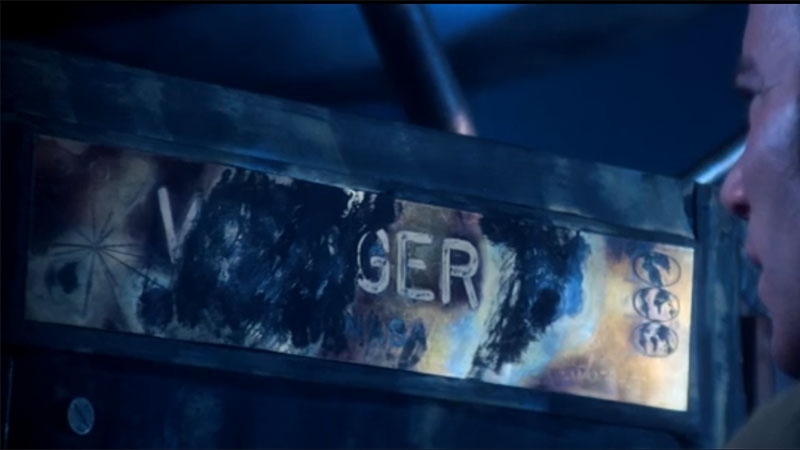
Voyager 6
To call V’ger an “antagonist” simply fails to capture its immensity…we’re talking about a force of nature here. It is one of the most extraordinary lifeforms the Federation has ever encountered, and its enormous power threatens to destroy Earth unless it can merge with its creator.
The first glimpses we get of this behemoth are of its outer energy cloud, capable of emitting the equivalent energy output of thousands of starships. Beyond its outer layer is a series of interlocking mechanical structures that lead to a central chamber, and at the heart of this chamber is the fictitious Voyager 6 probe.
Voyager 6 was built by NASA in the late 20th century and had fallen into a black hole, emerging countless light-years away and potentially centuries in the past. Members of a machine race augmented the probe to help it fulfil its programming—to learn as much as it could about the universe and return that information to its creator.
On its long journey back home, Voyager—having adopted the shortened name V’ger—gained self-awareness and collected data on a vast array of astronomical objects and phenomena, but in the process, it destroyed whatever it encountered. Just how long was V’ger’s journey, though? Let’s start at the very beginning. The purpose of NASA’s Voyager program was to conduct flybys of celestial objects in the outer solar system and beyond. Both Voyager probes were launched in 1977 to take advantage of a favourable alignment of the solar system’s two largest gas giants, Jupiter and Saturn.
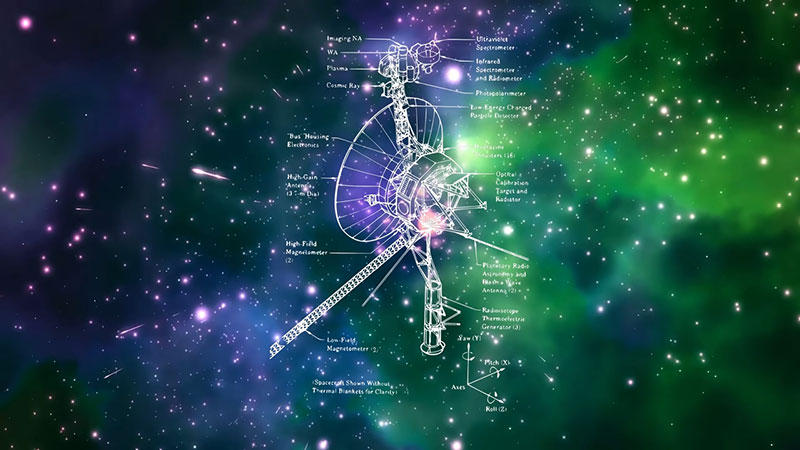
This alignment not only provided an opportunity to study both planets, but the probes used gravitational assists from the gas giants to gain extra speed. While the probes conducted surveys of Jupiter and Saturn, as well as Uranus and Neptune in Voyager 2’s case, Voyager 1 and 2 are technically classified as “interstellar probes.” And depending on how you define it, both reached interstellar space after crossing the heliopause—the point where the strength of the solar wind is cancelled out by the interstellar medium.
We’ve since sent orbiters to study the gas giants and other objects up close, such as Galileo and Juno. But besides the slower interplanetary probes, Pioneer 10 and 11 and more recent New Horizons probe, Voyager 1 and 2 are kind of alone in their missions. That said, numerous non-canon reference materials have provided extra details about the other four fictional Voyagers: they were identical in design and construction to the first two, likely being built at the same time—that is, in the 1970s.
Some references provide a 1999 launch date for Voyager 6, but the specific alignment of Jupiter and Saturn that offered the gravitational assist only happens every 175 years. This means that if Voyager 3, 4, 5, and 6 were meant to have similar flyby missions to 1 and 2, then they all should have been launched in the late 1970s. Huh…it’s almost like there’s a reason CANON material takes precedence when talking about stuff like this.
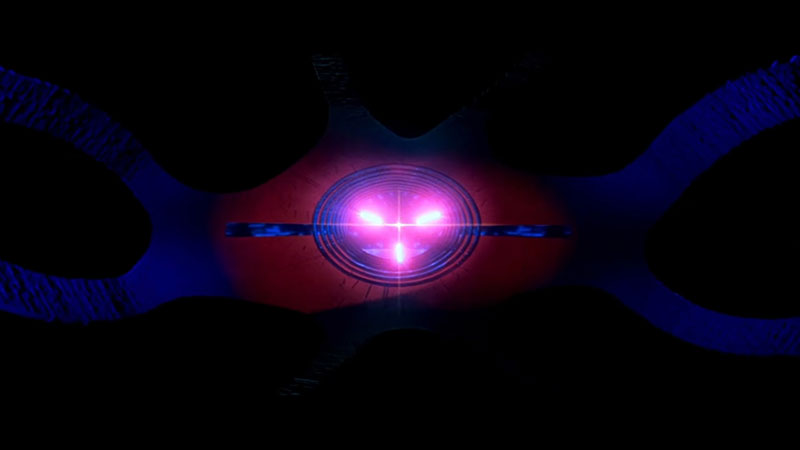
The Black Hole
Okay, what about the rest of Voyager 6’s journey? Well, for starters, let’s talk about the black hole. Star Trek and lots of other science fiction do like to play fast and loose with the rules of these powerful objects. In case you need a refresher, a stellar black hole is a massive astronomical object with a gravitational pull so strong that nothing—not even light—can escape from it.
The centre of a black hole is what is called a “gravitational singularity”—a region of collapsed spacetime with practically infinite density, as described by general relativity. Our current understanding of black hole physics suggests that once an object crosses the black hole’s event horizon—the boundary of no escape—it is torn apart by tidal forces in a process colloquially called spaghettification. The object’s mass is added to the total mass of the black hole, which is then slowly emitted as Hawking radiation.
Except, that’s only half the story. Everything I just described the singularity and what happens beyond the event horizon applies primarily to non-charged, non-rotating black holes, or Schwarzschild black holes. All known astronomical objects, however, rotate—they have angular momentum, or spin because the matter that composes them is not perfectly symmetric in motion.
The Schwarzschild metric is, in fact, only one of four solutions to Einstein’s field equations in general relativity. Kerr black holes have spin but no electric charge. Reissner-Nordström black holes have an electric charge but no spin. And finally, Kerr-Newman black holes have both an electric charge and spin. Of these, the Kerr metric has lined up the closest with real-world observations.
Now, this is something of an oversimplification: Kerr geometry still has some problems. At least, they’re considered problems by those who care about, oh, I don’t know, preventing violations of causality! You see, the concept of a singularity is kind of problematic. It’s often perceived as signalling a breakdown of general relativity, but this is to be expected—this is where theories like the Einstein-Maxwell equations and loop quantum gravity come in to help bridge the gap.
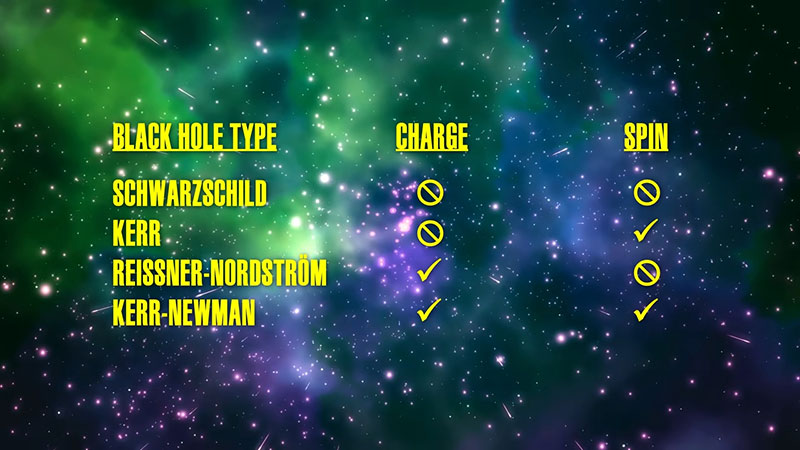
There’s an ongoing debate in astrophysics as to whether infinite-density singularities actually exist or are simply a mathematical construct. But suffice it to say, the Kerr and Reissner-Nordström solutions make it possible to avoid the infamous spaghettification and actually exit the black hole at a different point in spacetime. In other words, the solution for a rotating black hole with little to no charge—i.e., possibly the only type we expect to exist in the universe—makes room for wormholes, white holes, and time travel. (Pfft—and the Vulcan Science Directorate thought time travel was impossible.)
So, by travelling along a closed timelike curve—a path through 4D spacetime that takes an object to its own past—Voyager 6 could have totally bypassed any singularity as per real, “exact” solutions to general relativity. Now, mind you, the fact that it came out the other side and survived intact, going on to have a major impact on galactic history, is still very much the sci-fi part of this discussion.
An object following a closed timelike curve can, for instance, lead to problems like the grandfather paradox. That said, there are solutions to such time paradoxes like the Novikov self-consistency principle, which says the probability of a history-altering event will always be zero. Nevertheless, it’s expected that peculiar effects like backwards time travel would not survive in a proper unified theory involving quantum mechanics.
The fact that Star Trek ever treats an actual black hole like a wormhole, or, officially, an Einstein-Rosen bridge, is likely wishful thinking, many would argue. So, sorry to be a downer…but realistically, as soon as Voyager 6 crosses that event horizon, it’s most likely toast.
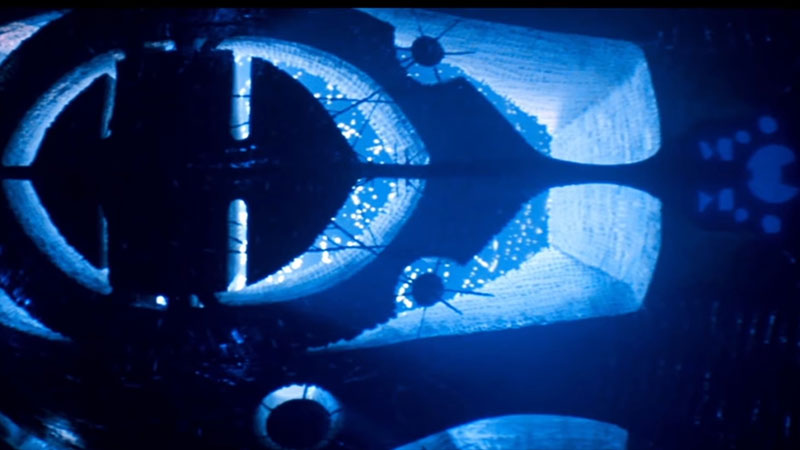
V’ger’s Journey Back
But, okay, for the sake of this video—and for the sake of not invalidating the entirety of the Star Trek franchise—let’s just go with the idea that traversable wormholes are actually possible. This may be the case as suggested by alternative explanations like string theory or other theories involving “exotic matter.” In The Motion Picture, William Shatner…I mean, uh, Admiral Kirk theorizes that Voyager 6 may have emerged on the far side of the Milky Way Galaxy before it fell into the machine planet’s gravitational field. But when Spock explores V’ger’s interior using his thruster suit, he sees images not only of planets and star systems but entire galaxies that V’ger has imaged and supposedly explored.
This points to the possibility that V’ger’s journey was indeed intergalactic. But even if the other terminus of the black hole Voyager 6 fell into was in the Delta Quadrant—dubious as its path took it through Klingon space—there’s still no guarantee the V’ger ever encountered the Borg, even if it didn’t travel in a straight line.
Regardless, the idea that the machine planet V’ger encountered is the Borg homeworld has been fleshed out in numerous non-canon works. William Shatner’s novel The Return explains that Spock’s mind-meld with V’ger protected him from being assimilated and gave the Federation the coordinates of the Borg homeworld for a final attack.
The videogame Star Trek: Legacy suggests that V’ger created the Borg, not the other way around, as a way to gain knowledge through assimilation. In this continuity, Voyager 6 not only travelled across the galaxy but also back in time, a fact that is never explicitly stated in The Motion Picture. In the comic Star Trek: Nero, V’ger gives the Narada Borg-based modifications and helps Nero calculate when and where Spock will arrive in an alternate reality.
But again…all of this is speculation from licensed works. In fact, the “machine planet” might as well have been Cybertron from the Transformers franchise, since they’re also part of Star Trek’s “beta canon”—officially licensed, non-canon works. And Roddenberry’s comment linking V’ger with the Borg homeworld was more or less meant to be a joke.
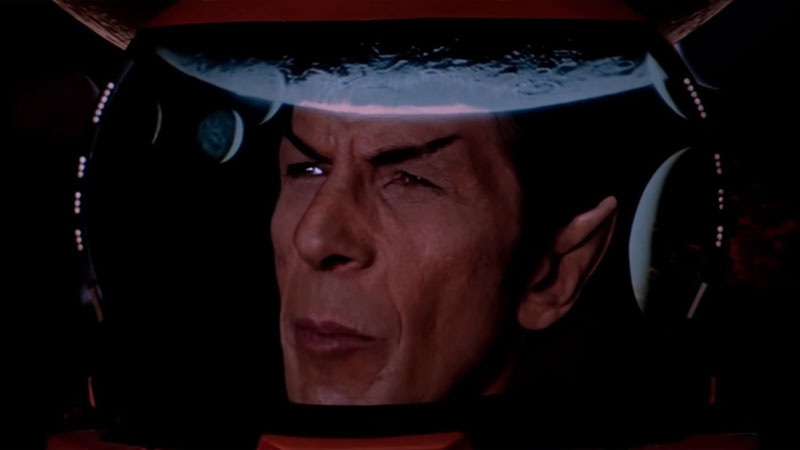
Indeed, there’s very little linking the Borg and V’ger besides both having aspects of artificial intelligence. V’ger is so much more powerful than anything we’ve seen from the Borg, with its energy field being “of the twelfth power.” The twelfth power of what, you ask? I don’t exactly know, but again, it apparently packs more energy than even thousands of starships. V’ger’s directive is also distinctly different from Borg’s.
V’ger gains knowledge and power by absorbing and thus destroying the things it encounters in an effort to impress its creator, while the Borg assimilates organics and their technology into the Collective to reach a state of “perfection.” Even if the Borg encountered Voyager 6 early in their history—say, around the year 1400 A.D.—they likely would have ignored it because of its inferior technology.
The Motion Picture states that the inhabitants of the machine planet viewed V’ger as one of their own—primitive, but of a kindred spirit. This means they were likely already fully cybernetic and possibly actual “robots” in the clinical sense, which the Borg definitely aren’t—they’re cyborgs. Cyborg…Borg…sounds Swedish.
I should note that the explanation offered in Legacy doesn’t totally contradict what’s established in The Motion Picture. The game suggests V’ger created the Borg as heralds in search of its creator, but the Borg strayed from their original purpose to later become the infectious race we know today. Legacy thus leaves room for the interpretation that V’ger was already augmented by another “machine race” before any encounter with the Borg.
While this is all very interesting, it runs the risk of making Star Trek suffer from “small universe syndrome”—that is, in an effort to connect all these disparate events, the element of mystique vanishes, which can actually be less narratively satisfying.
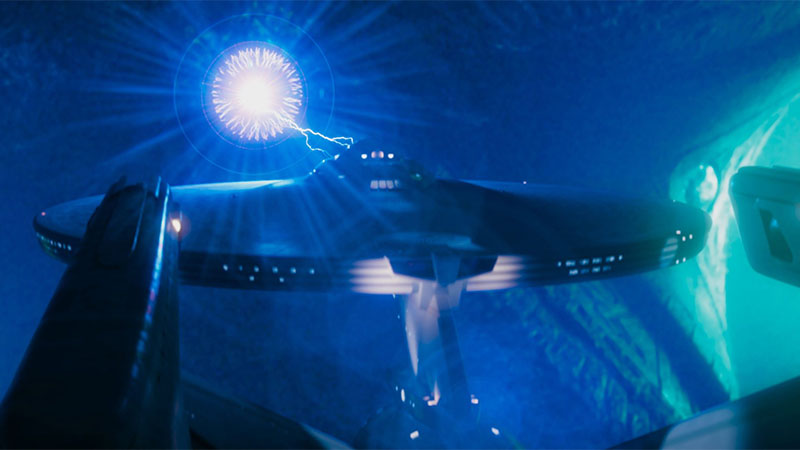
In Conclusion
So, what do you think? Does V’ger have any connection to the Borg? Should V’ger’s origins even be further touched upon in canon? Or would you prefer it to stay a mystery?. . . Let me know down in the comments.
If you want to support my work even further, becoming a patron at patreon.com/orangeriver is a great way to do so.
Watch The Latest Video By Orange River Media Below
If you enjoyed this video, be sure to leave a thumbs up down below and don’t forget to share it. That stuff really helps me out. If you haven’t subscribed, be sure to do that as well and click the bell icon to receive all notifications.
That’s all I have for this week, I’ll see you next time.
You can find Orange River Media at the links below
- YouTube: https://www.youtube.com/orangeriver
- Twitter: https://www.twitter.com/orangerivernw
- Instagram: https://www.instagram.com/orangeriver.nw
- Facebook: https://www.facebook.com/orangerivernw
- Patreon: https://www.patreon.com/orangeriver

